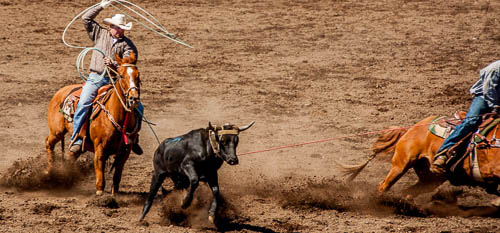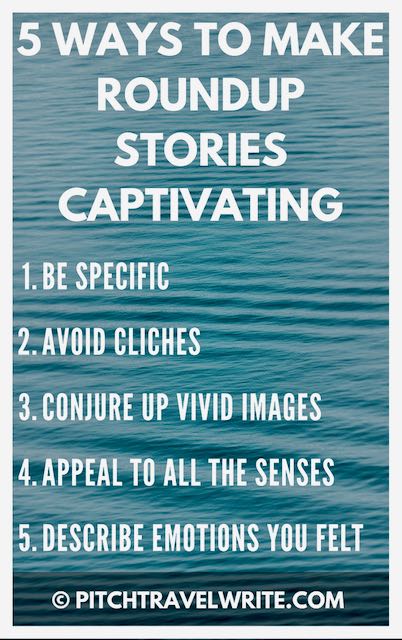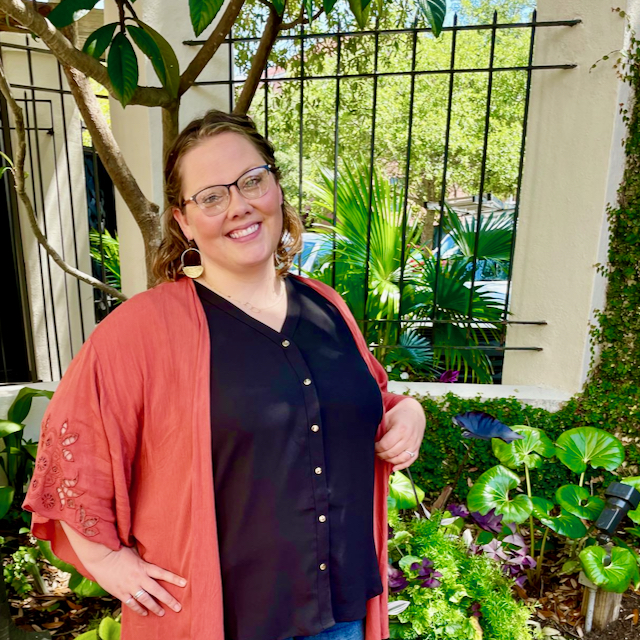- Home
- Types of Travel Stories
- Roundup Travel Stories
Why Roundup Travel Stories
are the Most Fun to Write
By Roy Stevenson
I’m often asked, “What are the best travel stories to write?” By far, my favorite travel stories are roundup pieces.
 Roundup rodeo event at Mt. Adams in Washington State.
Roundup rodeo event at Mt. Adams in Washington State.When I hear the word round-up I can’t help thinking about rodeo round up events that are held in many places across the U.S. These events feature a variety of activities from steer roping to bull riding, and from barrel racing to parades and pageants.
What's so great about rodeo round ups? There’s something for everyone!
Round-up travel stories have many similarities. These are high-level descriptions, or “roundups”, of what a city or place has to offer. There’s enough variety to offer something of interest for everyone.
Round up stories are written in a similar way to travel guides. You don’t go into great detail about the attractions.
They’re easy to write because you won’t have to do much in-depth research. Usually a sentence or two—or a paragraph or two—about each tourist attraction will suffice. Because of this, round-up stories practically write themselves.
Be aware, you might feel frustrated by this. The brevity of roundup stories is hard for the travel writers who like to go into greater detail about their destinations. It’s difficult to paint a detailed picture of a place or an attraction in two or three sentences in a roundup piece.
You have to make the most of a limited number of words.
So your task is to get very good at writing brief, enticing descriptions.
Writing roundup stories is an important rite of passage for novice travel writers. For many travel writers they form the foundation of their bread-and-butter income.
Benefits to Roundup Stories
The thing I like most about roundup stories is a pleasant side benefit. By their very nature, roundups cover lots and lots of tourist attractions—and often include “Where to Stay” and “Where to Eat” sections.
The benefit: you get to visit all the major attractions, restaurants, and hotels for your research and photos!
For this reason, round-up stories give you the keys to the kingdom! You can request complimentary entry to all the destination’s tourist attractions. And, you can also request complimentary accommodation and meals.
Once you have a
roundup assignment, you’re perfectly entitled to ask the local tourism
agency Destination Marketing Organization (DMO) for their assistance.
Roundup stories warm the hearts of the media representatives, because
they get to spread the love around to all of their clients, rather than focusing
only on one attraction.
As a result, media reps are typically happy to work out a nice itinerary for you to cover the needs of your assignment. They understand that a
roundup story gives every one of their clients some exposure, plus they usually add a few extra things to round out the package.
Some Examples
A good friend of mine, the editor of Northwest Travel & Lifestyle Magazine often calls upon me to write round up stories.
In the past few years my round-up stories for Northwest Travel & Life have covered multi-sport events and relays in the Pacific Northwest, the finest rustic luxury lodges in the region, historic Northwest forts, and more recently, romantic fall getaways.
Likewise, the editor of a Washington State wine magazine, Washington Tasting Room, often contracts with me to write round up stories about clusters of wineries around the state. These have been some of my most enjoyable travel writing gigs; Linda and I have cruised around 5 or 6 wineries over 2-3 days, wine tasting and being treated like royalty everywhere we go.
Other sweet round-up assignments for print and online publications have led to sweet gigs like “The Best Luxury Spas and Villas in Bali” and “Arizona’s Finest Luxury Resorts”. If you like luxury travel and want to write about it, here's how to dream up luxury travel story ideas.
Just because round up stories are not in-depth, doesn’t mean they don’t have a story angle. They generally have a theme of some kind. Often they start with titles like “The Best…”, or “The Top…”, or “The Most…”.
But I’d like to say a word about the art of writing good round up travel stories versus those uninspiring ‘Top Ten” lists we see online, in so many blogs and websites:
A good roundup story paints a picture, albeit brief, about your destination. It inspires the thought, “I didn’t realize there was so much to do there!”
Top Ten lists do nothing to help us “see” the destination, and nor do they make us want to visit the place. A list is not a travel story. There’s a big difference.
Here are some examples of published round up stories I’ve written for print media:
Themed round up stories:
- Scottish microbreweries (Beer Connoisseur)
- The Top Ten Belgian Beer Festivals (Beers-of-the-World)
- Belgium’s Trappist Breweries (Zymurgy)
- Wine Tasting in Washington’s Tri-Cities (Washington Tasting Room)
Destination round up stories:
- Queenstown: Jewel in the Crown (Australia & New Zealand)
- A Weekend in Portland (Mid-Columbian)
- Winter in Leavenworth, Washington (Mid-Columbian)
- Best Marina Destinations in the Puget Sound (Canadian Yachting West)
- Best lakes for kayaking in S.E. Alaska (Disney, Norwegian, and Holland America Cruise Lines onboard magazines)
- History museums in the Columbia River Gorge (Gorge Guide)
- Southern Oregon Ghost Towns (Lost Treasure)
The Problem with Roundups
Now that you’re aware of what constitutes round up stories, you’ll see them everywhere in your favorite travel magazines.
But there’s one big catch with writing round ups: it's difficult to make them sound interesting. You need to take the basic details and somehow inject life into your roundup stories.
If your story is written like in travel guidebooks and you just name the main attractions, the result will be a dry and boring article. Obviously, you don't want that to happen. So you need to take it to a level beyond guidebook mode.
Five Effective Ways to Avoid Writing Boring Round up Travel Stories:
1. Make the salient points about each attraction engaging and specific. You'll see some examples in the section below.
2. Avoid clichés and mundane descriptors. Using words like “interesting”, “charming” and “quaint” aren’t interesting or descriptive.
You can find a more complete list of cliches and mundane descriptors in this article.
3. Include some punchy sentences that conjure up a vivid image of a place.
If you're having trouble with this, I wrote an article about creating a sense of place that will help you.
4. Appeal to all the senses: sights, colors, sounds, smells, tastes, touch.
Your article will be one-dimensional is you only talk about what you see. We have at least six senses - use all the senses that were conjured up when you experienced the place and attractions.
5. Beyond our senses, we also experience feelings no matter where you go. Describe what emotions you felt when visiting the place and you do a better job of describing the place.
You're not likely to use all five techniques in each description. A combination of techniques, relevant to your experience, works best.
Here are a few examples of how I injected these techniques in my roundups:
This quote is from one of my stories about Juneau, Alaska. It paints a picture and uses sound, smell and temperature:
“A murky mist hangs low over Lake Mendenhall, a few miles from Juneau. Although dawn has broken, the sky is too dark to reflect off the lake’s gray, silted water. The air is quiet and still, apart from the low murmurings of the kayakers preparing their rigs for the water. With the temperature just above freezing, it even smells cold.”
This quote conjures up a vivid picture while blending in facts about about marinas and yachting destinations in Washington State’s Puget Sound:
“This moorage on the southeast tip of Orcas Island provides a beautiful natural setting. Don’t expect to see a slick resort here. Instead, you’ll find thirty old wooden cabins, domes, and yurts that look like they were constructed as part of a hippie community circa the 1960’s — which, apparently, is how this resort got started.”
The next two quotes paint pictures of the scenes. The first one includes movement and the second one color. Both are examples of using elements of art in writing. They're from my roundup piece about Queenstown, New Zealand.
“The sweeping view across the Glenorchy basin is magnificent; Diamond
Lake in the foreground, lush green farmland dotted with white specks of
sheep across the valley, and rows of jagged tooth massifs in the far
distance. A paraglider soars over us riding the thermals, loitering for a
while, before moving on to land further along the mountain.”
“Further on, fields of pink and magenta lupines provide a curtain of bright colour against the green marshlands and grey mountains.”
The following three quotes paint vastly different, vivid pictures of the
same place, using feelings, sound and color. These are from my roundup
story about Rotorua, New Zealand, the North Island’s most famous tourist
town.
“Kahu has us all fired up when we arrive at the Marae (village), and two hundred of us spill out of our buses to be herded around the edge of a wide semi-circular sandy dirt arena where we stand under an open tin-roofed shelter. It’s a gorgeous spot with a background of dense, impenetrable green native forest, from which guttural Maori chants are echoing.”
“The show culminates in the fiercest Haka, or war dance, I have ever seen. Every visitor in the room feels the electric waves of passion and ferocity that emanate from the warriors as they flick their clubs and spears menacingly, roll their eyes back, and wave their tongues. These guys are terrifying!”
“Moving on, I walk along white gravel pathways that meander past scenes from what I would imagine hell to be like. Huge clouds of hot steam and mist billow from jagged rents in the earth’s narrow crust; an overpowering smell of sulphur assaults my nose; and plumes of white geysers erupt from boreholes in the barren rock.”
So that's all there is to it!
Writing round-up stories is a great way to start your travel writing career. Doing the “research” is enjoyable, like planning a trip, and once you've mastered them they become easy to write.
Don’t forget about the travel comps that come with covering a broad range of activities. They're the most enjoyable benefit to roundup travel stories.
If you don’t know how to go about requesting help from tourist agencies and PR companies, I’ve written a guide about parlaying your assignments into complimentary travel.

Special Report:
How to Land Press Trips and Fam Tours
I've written a guide about how to land press trips. It will tell you everything you want to know about how to get into the inner circle and get invited on regional, national and international press trips.
Related articles that will interest you:
How to Break into the Luxury Travel Writing Market
Dreaming Up Story Ideas that Sell
Travel Story Idea Troubleshooting Guide: "Why Can't I Sell My Travel Articles?"
Travel Stories to Help You Find Your Niche

Roy Stevenson is a professional travel writer and the author of www.PitchTravelWrite.com. Over the past ten years, he’s had more than 1000 articles published in 200 magazines, trade and specialty journals, in-flights, on-boards, blogs and websites and has traveled on assignment around the U.S. and to dozens of international destinations.
IF YOU ENJOYED THIS POST, GET UPDATES. IT'S FREE.













